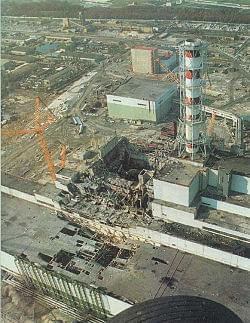The superconducting magnet seen here could be the key ingredient in finally producing a commercial fusion reactor.
The magnet will be deployed in the SPARC tokamak developed by MIT which is currently under construction with a 2025 completion date.


A nuclear reactor at an Illinois energy plant is helping University of Chicago scientists learn how to catch and understand the tiny, elusive particles known as neutrinos.
At Constellation’s (formerly Exelon) Dresden Generating Station in Morris, Illinois, the team took the first measurements of neutrinos coming off a nuclear reactor with a tiny detector. These particles are extremely hard to catch because they interact so rarely with matter, but power reactors are one of the few places on Earth with a high concentration of them.
“This was an exciting opportunity to benefit from the enormous neutrino production from a reactor, but also a challenge in the noisy industrial environment right next to a reactor,” said Prof. Juan Collar, a particle physicist who led the research. “This is the closest that neutrino physicists have been able to get to a commercial reactor core. We gained unique experience in operating a detector under these conditions, thanks to Constellation’s generosity in accommodating our experiment.”

Do two promising structural materials corrode at very high temperatures when in contact with “liquid metal fuel breeders” in fusion reactors? Researchers of Tokyo Institute of Technology (Tokyo Tech), National Institutes for Quantum Science and Technology (QST), and Yokohama National University (YNU) now have the answer. This high-temperature compatibility of reactor structural materials with the liquid breeder—a lining around the reactor core that absorbs and traps the high energy neutrons produced in the plasma inside the reactor—is key to the success of a fusion reactor design.
Fusion reactors could be a powerful means of generating clean electricity, and currently, several potential designs are being explored. In a fusion reactor, the fusion of two nuclei releases massive amounts of energy. This energy is trapped as heat in a “breeding blanket” (BB), typically a liquid lithium alloy, surrounding the reactor core. This heat is then used to run a turbine and generate electricity. The BB also has an essential function of fusion fuel breeding, creating a closed fuel cycle for the endless operation of the reactors without fuel depletion.
The operation of a BB at extremely high temperatures over 1,173 K serves the attractive function of producing hydrogen from water, which is a promising technology for realizing a carbon-neutral society. This is possible because the BB heats up to over 1,173 K by absorbing the energy from the fusion reaction. At such temperatures, there is the risk of structural materials in contact with the BB becoming corroded, compromising the safety and stability of the reactors. It is thus necessary to find structural materials that are chemically compatible with the BB material at these temperatures.


😀 😍 circa 2018.
You know Chernobyl, right? The place of the biggest nuclear accident in the world? The are is so radioactive nobody lives in the vicinity anymore, and nearby plants are suffering major amounts of radiation. However, not everybody is sad about this event; a type of fungi (mushrooms) possess an ability beyond imagination: they can take the lethal radiation and use it as a source of energy to feed and grow. Researchers have called them radiotrophic fungus.
For some 500 million years, fungi have been inhabiting this planet, feeding on whatever they could finding, filling every biological niche they could find. But who could have actually guessed that they could feed on nuclear radiation? Researchers from the Albert Einstein College of Medicine (AEC) had a hunch, and they investigated it to test. They first got the idea after reading that samples brought from Chernobyl were filled with some black fungi growing on it.


Russian forces have seized control of the Chernobyl power plant in northern Ukraine, the site of the world’s worst nuclear disaster, according to the agency that manages the area.
Troops overran the plant on the first day of Russia’s multi-pronged invasion of Ukraine, a spokesperson for the State Agency of Ukraine on Exclusion Zone Management, Yevgeniya Kuznetsovа, told CNN.
“When I came to the office today in the morning (in Kyiv), it turned out that the (Chernobyl nuclear power plant) management had left. So there was no one to give instructions or defend,” she said.

Successfully achieving nuclear fusion holds the promise of delivering a limitless, sustainable source of clean energy, but we can only realize this incredible dream if we can master the complex physics taking place inside the reactor.
For decades, scientists have been taking incremental steps towards this goal, but many challenges remain. One of the core obstacles is successfully controlling the unstable and super-heated plasma in the reactor – but a new approach reveals how we can do this.
In a joint effort by EPFL’s Swiss Plasma Center (SPC) and artificial intelligence (AI) research company DeepMind, scientists used a deep reinforcement learning (RL) system to study the nuances of plasma behavior and control inside a fusion tokamak – a donut-shaped device that uses a series of magnetic coils placed around the reactor to control and manipulate the plasma inside it.
The Google-backed AI firm taught a reinforcement learning algorithm to control the fiery plasma inside a tokamak nuclear fusion reactor.
